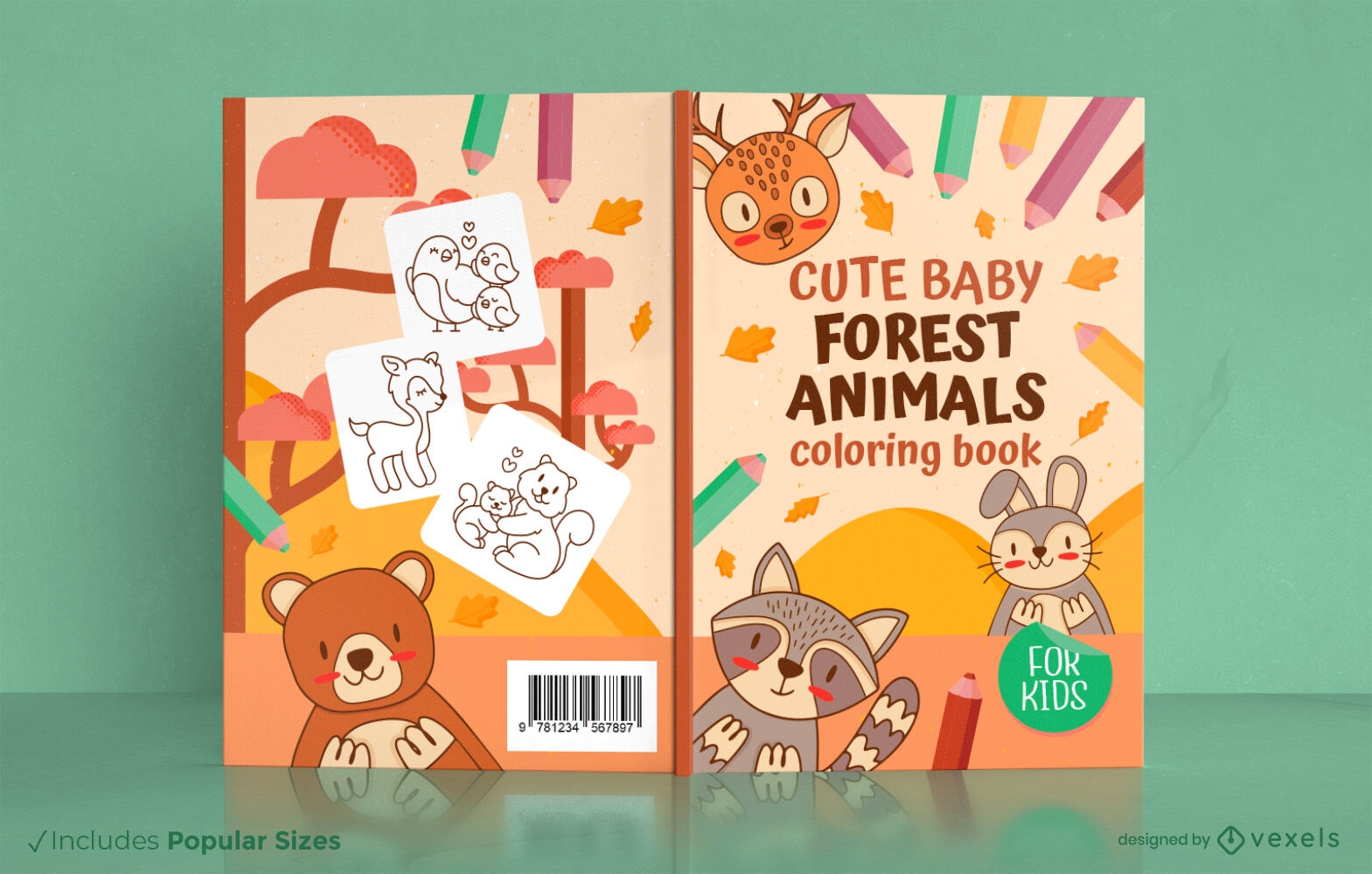
Estimated reading time: 10 minutes
Key Takeaways
- A compelling cover influences clicks and sales by creating a strong first impression.
- Design should match your audience—playful for kids, elegant for adults.
- Essential elements include clear title placement, high-resolution imagery, and readable typography.
- Use high-contrast color palettes and test readability at thumbnail size.
- Avoid overcrowding, poor font choices, and incorrect formatting specs.
- Decide between DIY and professional design based on budget, time, and skill level.
Table of Contents
- Introduction
- Why Your Coloring Book Cover Matters
- Understanding Your Audience and Book Theme
- Key Elements of Designing Coloring Book Covers
- Tips for Creating a Coloring Book Cover
- Common Mistakes to Avoid
- DIY vs. Hiring a Professional Designer
Introduction
Creating a captivating coloring book cover is essential for grabbing attention and boosting sales in today’s crowded market. When shoppers scroll through Amazon or browse an aisle in a bookstore, the first thing they see is the cover. A standout coloring book cover can mean the difference between a quick glance and a purchase.
In this post, we’ll cover:
- Why a coloring book cover matters
- How to match your cover to your audience and theme
- Key design elements for effective covers
- Actionable tips for creating a coloring book cover
- Common mistakes to avoid
- DIY vs. hiring a professional designer
Read on to learn how to make a coloring book cover that pops, conveys quality, and sells more copies.
Why Your Coloring Book Cover Matters
Influence on Purchasing Decisions
- Buyers judge books by their covers; a strong design suggests value and credibility.
- An eye-catching cover entices readers to click or pick up the book.
- Quality cover art builds trust and encourages positive reviews.
First Impression in Marketplaces
- Online: Covers appear as thumbnails; clarity at small sizes is vital.
- Physical stores: A striking cover stands out on crowded shelves.
- Consistent visuals across ads and listings reinforce brand recognition. Affordable Book Marketing Services can help maintain this consistency.
Role in Branding and Targeting
- A cover sets the tone for your book; it must match your overall brand style.
- Tailor design elements—colors, fonts, imagery—to your niche to attract the right buyers.
- Children’s books need playful art; adult coloring books benefit from elegant, intricate designs.
Understanding Your Audience and Book Theme
- Research demographics: age, interests, and trends.
- Children’s coloring books:
- Bright, vibrant colors
- Fun characters and playful scenes
- Bold, easy-to-read fonts
- Adult coloring books:
- Intricate patterns such as mandalas or florals
- Calming color palettes (blues, greens, pastels)
- Sleek, modern typography
Selecting Colors, Styles, and Typography
- Colors: Use color psychology to elicit emotion—red for energy, blue for calm, yellow for joy.
- Styles: Ensure cover art matches interior pages; a nature-themed book needs relevant imagery.
- Typography: Pair fonts that complement each other; a script font with a sans-serif for contrast works well.
Visual Consistency
- The cover’s look should reflect the content inside.
- Accurate representation avoids disappointing buyers.
- Cohesive design across all parts of the book builds brand trust.
Key Elements of Designing Coloring Book Covers
- Title and Subtitle: Place the title front and center; make it large and legible.
- Imagery: Choose high-resolution illustrations that reflect your theme. How to Create Captivating Illustrated Book Covers provides deeper insights.
- Layout and Hierarchy: Follow alignment and contrast principles; use visual weight to guide the eye.
- Typography: Pick fonts that match your cover style; maintain readability by avoiding overly decorative typefaces.
- Background: Use solid colors, gradients, or subtle textures to add depth without overpowering key elements.
- Dimensions and Resolution:
- Print Formats: Standard sizes (8.5″ x 11″, 8″ x 10″), 300 DPI, include bleed and safety zones.
- Digital Formats: Optimize for screens (JPEG/PNG, RGB), and test clarity at various resolutions.
- Front vs. Wrap-Around Design: Ensure consistency across front cover, spine, and back for a cohesive look.
Tips for Creating a Coloring Book Cover
When tips for creating a coloring book cover are implemented, follow these actionable steps:
- Use Attention-Grabbing and Relevant Illustrations: Pick central images that convey your book’s theme and ensure commercial licensing.
- Keep the Design Clean Yet Engaging: Avoid overcrowding; use white space to guide the eye and create balance.
- Choose Fonts That Reflect Your Book’s Tone: Match typography to your theme and ensure strong contrast.
- Use High-Contrast and Mood-Appropriate Color Palettes: Contrast makes titles and imagery pop.
- Ensure Readability at Thumbnail Size: Test designs at small dimensions and simplify as needed.
- Incorporate Branding Elements: Feature the author’s name and series logos for recognition across books.
- Test Designs with Potential Buyers or A/B Testing: Use social media polls or ad variations to refine your cover.
Common Mistakes to Avoid
- Overcrowded Design: Too many elements create confusion.
- Poor Typography Choices: Fancy but unreadable fonts harm legibility.
- Using Irrelevant or Low-Quality Graphics: Pixelated images reduce perceived value.
- Ignoring the Target Audience: A mismatch in style deters potential buyers.
- Incorrect Formatting and Dimensions: Skipping bleed or safety zones can ruin prints.
- Amateurish Design Due to Lack of Skills: DIY without basics leads to unpolished results.
DIY vs. Hiring a Professional Designer
Pros of DIY Designing Coloring Book Covers
- Cost Savings: No design fees.
- Creative Control: You steer every aspect.
- Skill Building: Learn tools like Canva or Illustrator.
Cons of DIY
- Time-Consuming: Learning software takes hours or days.
- Potential Lack of Polish: May not meet professional standards.
- Limited Resources: Fewer premium assets and fonts.
Pros of Hiring a Professional
- Expert Quality: Designers know market trends and best practices.
- Time Savings: You focus on writing and marketing.
- Better ROI: A polished cover can boost sales and credibility.
Cons of Hiring a Professional
- Higher Cost: Designer fees vary by complexity.
- Less Creative Control: Requires clear communication.
Consider partnering with a seasoned designer to bring your vision to life and give your coloring book cover the professional edge it deserves.
FAQ
How do I choose the right colors for my coloring book cover?
Use color psychology: bright hues for energetic, playful themes and muted palettes for relaxation or adult audiences.
Should I design the cover myself or hire a professional?
Weigh your budget, time, and skill level—DIY is cost-effective but may lack polish; professionals offer expertise at a higher price.
What resolution is best for print covers?
Use at least 300 DPI and include a 0.125″ bleed with safety zones to ensure high-quality prints.
How can I ensure my cover looks good as a thumbnail?
Test your design at small sizes, simplify complex elements, and increase font sizes or contrast as needed.



